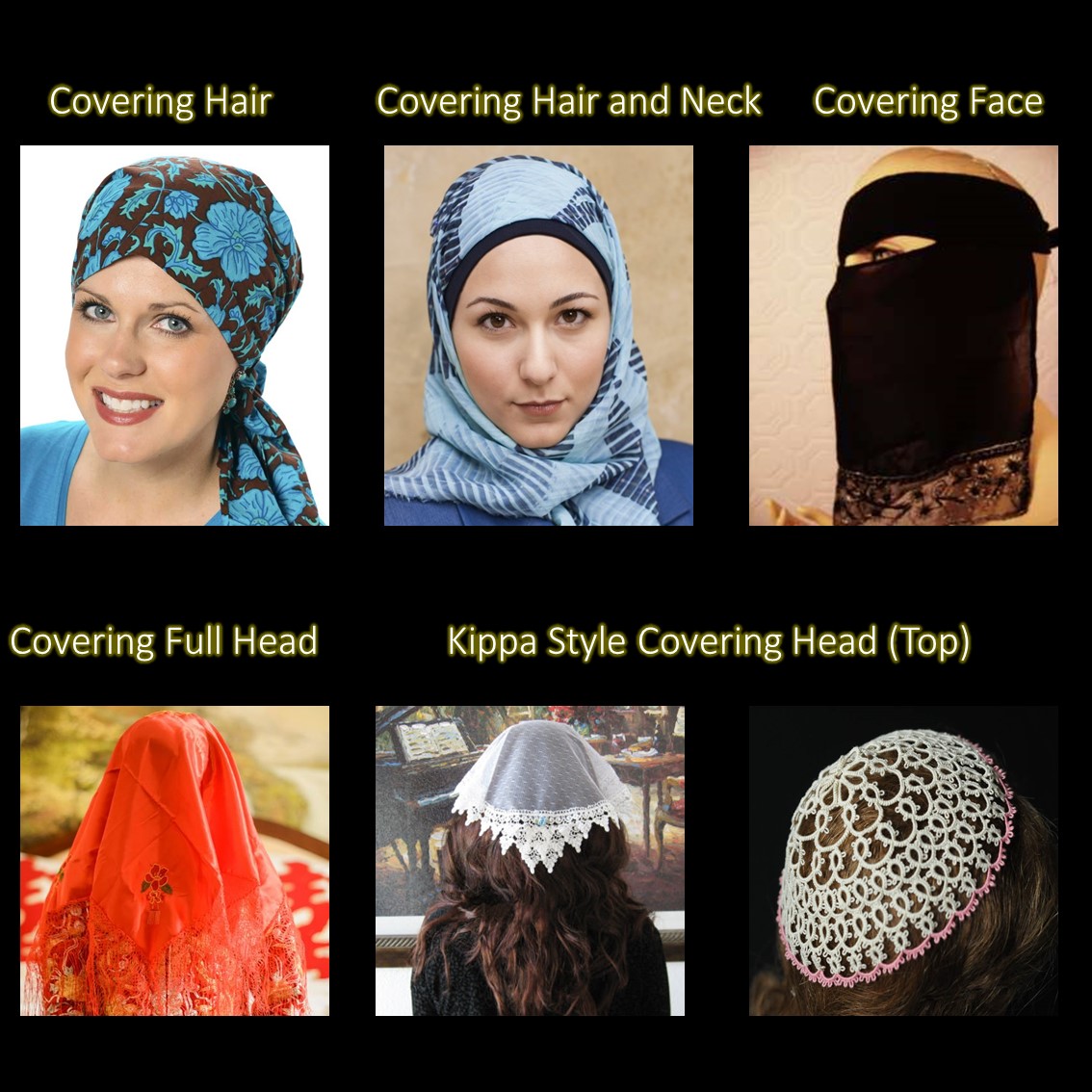This head-covering thing started to boggle me ever since I posted the comparisons of Al-Muwatta, Sahih and Quran. I realised that I had automatically assumed it to be something like the islamic practice. Then I was like “why do we think of the islamic way of HAIR and NECK covering when we hear the phrase HEAD-COVERING?” Isn’t that falling into a stereotyped description?
I re-read the 3 quranic verses that are associated with women’s covering. None of them explicitly mentions head at all. Some have put the word head there deliberately but in the original form head is not mentioned at all. But everyone of course reads it with the hadith in mind so it sounds like head is mentioned there.
This covering thing is very confusing and one of the most obscure rules that is interpreted differently yet the most demanded one because it concerns women of course.
Now I wonder about the head-covering mentioned in the Old Testament. I wonder if the head-covering back in those times had a different purpose than what people tend to think today (chastity, decency, modesty).
* Is there an explicit description about what exactly is wanted to be covered? Full head, top of the head, hair etc.?
* Is the hair described as something “sexually attractive” that people tend to think it is the most important part to cover?
* Or is the covering demanded to appear neat and clean while present at church (before god)?
* Does the covering of the head require a scarf or something like kippa? Is the item to use as cover mentioned?
* Why does yahweh demand head covering and does he want men to cover while in church, too?
Subscription Note:
Choosing to subscribe to this topic will automatically register you for email notifications for comments and updates on this thread.
Email notifications will be sent out daily by default unless specified otherwise on your account which you can edit by going to your userpage here and clicking on the subscriptions tab.






























Platforms like SingularityNET allow developers to share AI solutions across blockchains, fostering innovation and accessibility. crypto presale updates